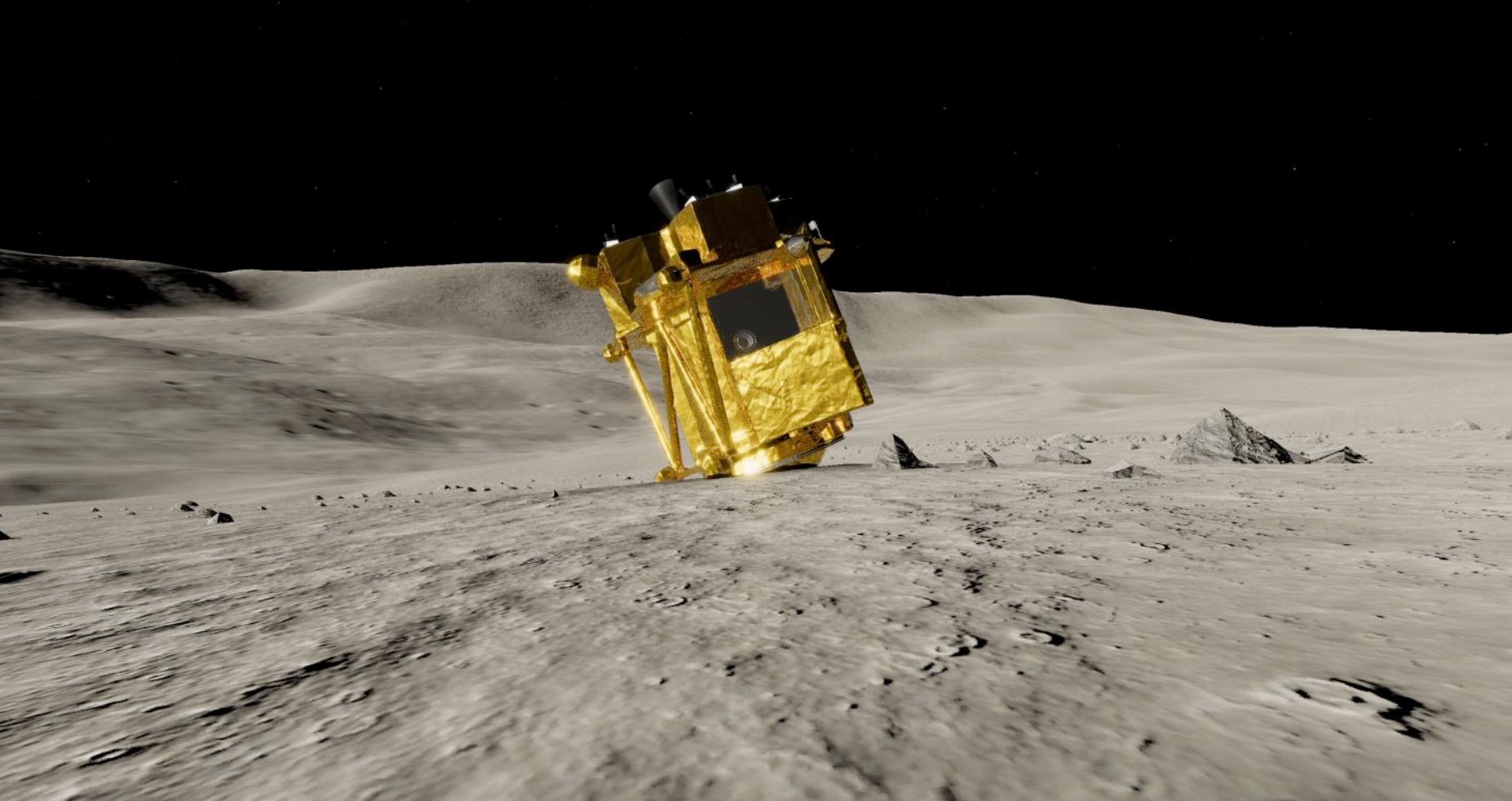Japan’s space agency didn’t expect its wrong-side-up SLIM moon lander to revive itself after powering down for a circuit-chilling lunar night on Feb. 1. But that’s exactly what happened.
“Last night, a command was sent to SLIM and a response received, confirming that the spacecraft has made it through the lunar night and maintained communication capabilities!” the SLIM mission team reported today in a posting to X / Twitter.
This wasn’t SLIM’s first resurrection: The boxy spacecraft touched down and tumbled onto its side on Jan. 19-20, settling in a position where its solar arrays couldn’t charge up its batteries. To conserve power, mission managers put the probe into hibernation and waited for the sun’s rays to hit the panels at a more favorable angle.
The team was able to revive the lander and get a few days’ worth of science data before putting it back into hibernation. Mission managers thought that might have been the end. During the 14-day lunar night, surface temperatures were expected to fall to about 200 degrees below zero Fahrenheit (-130 degrees Celsius) — a deep-freeze that was colder than what SLIM was designed to endure.
The lunar night ended days ago. After giving SLIM’s solar panels a chance to charge up the batteries again, the team at the Japan Aerospace Exploration Agency decided to check in — and got the good news. The circuitry is warm again. Actually, it’s hot: SLIM’s team members said that when the lander resumed contact, some of its equipment was hotter than 212 degrees Fahrenheit (100 degrees Celsius). That’s too hot for their liking.
“Communication with SLIM was terminated after a short time, as it was still lunar midday and the temperature of the communication equipment was very high,” the mission team reported. “Preparations are being made to resume operations when instrument temperatures have sufficiently cooled.”
Based on that information, it sounds as if SLIM (whose acronym stands for “Smart Lander for Investigating Moon”) would be able to get in only a few days of work before the team has to put it to sleep again for the next lunar night. But that’s better than nothing. During SLIM’s previous opportunity to do some science, it made multispectral observations of its surroundings near Shioli Crater — including an assortment of rocks that were nicknamed after canine breeds.
SLIM’s remarkable revival may also boost the hopes of the team behind Intuitive Machines’ Odysseus lander, which touched down near the moon’s south pole last week and is expected to be in operation until lunar sunset about a week from now. Like SLIM, Odysseus made an off-kilter landing. Like SLIM, Odysseus was equipped with electronics that weren’t designed to survive the lunar night. And like SLIM, Odysseus will nevertheless get a wakeup call after the coming night has ended — just in case its circuits are more resilient than its designers thought.
Update: The SLIM team has posted a fresh photo from the lander. “During the SLIM overnight operation, we took images with a navigation camera!” the team said in a Japanese-language posting to X / Twitter:
Postscript: The SLIM mission team reported that the lander “re-entered a period of dormancy” after lunar sunset on March 1. “Although the probability of a failure increases with the repeated severe temperature cycles, SLIM operation will attempt to resume when the sun rises (late March),” the team said in a posting to X / Twitter.
SLIM’s handlers activated the lander’s Multi-Band Camera and tried to do a wider scan of the surroundings near Shioli Crater, but the camera didn’t work properly. “This is likely due to the nighttime conditions, but we will prepare for another opportunity based on the obtained data,” the SLIM team said.

